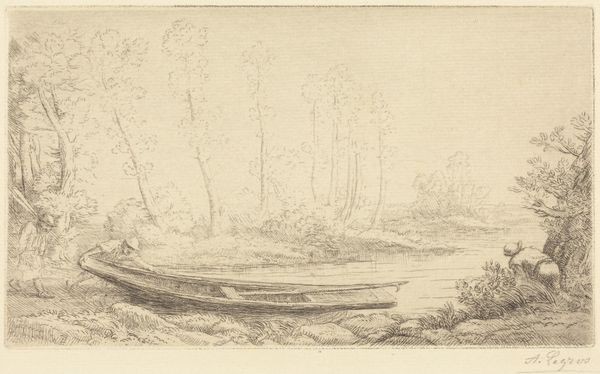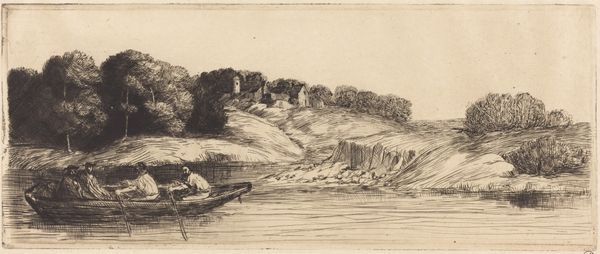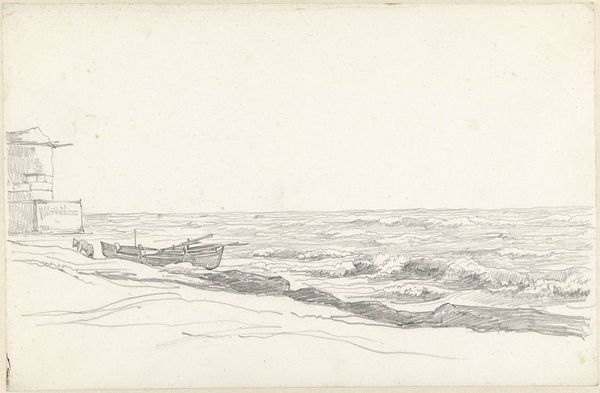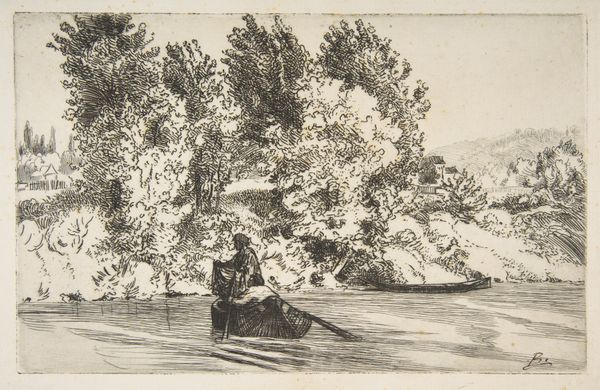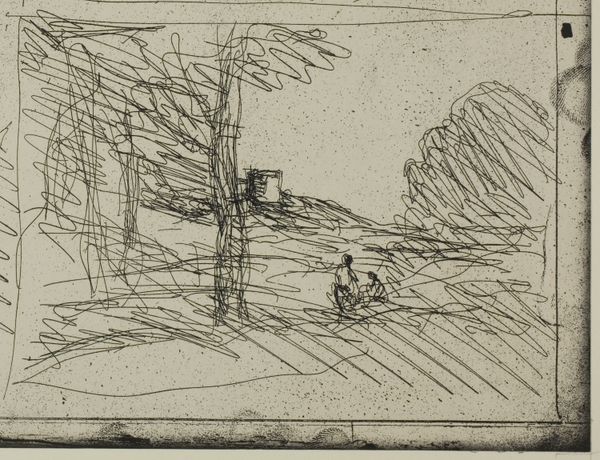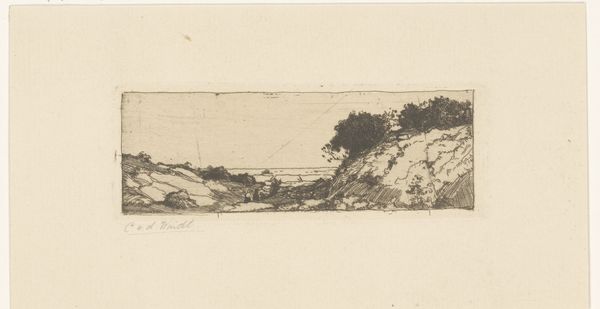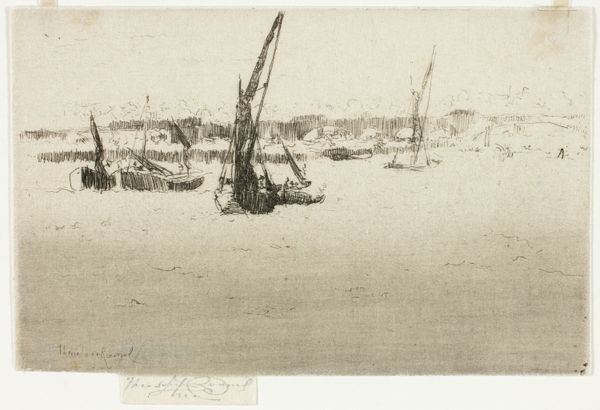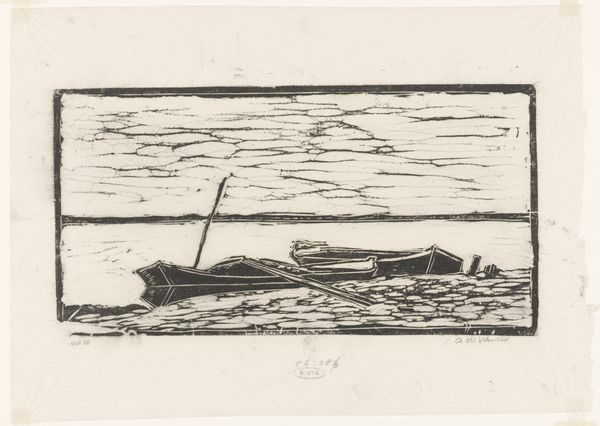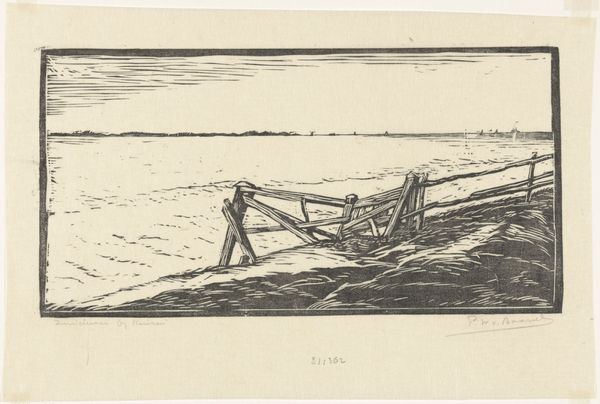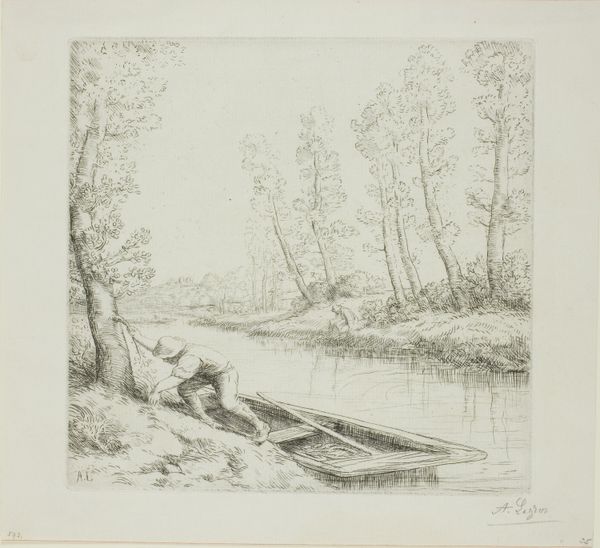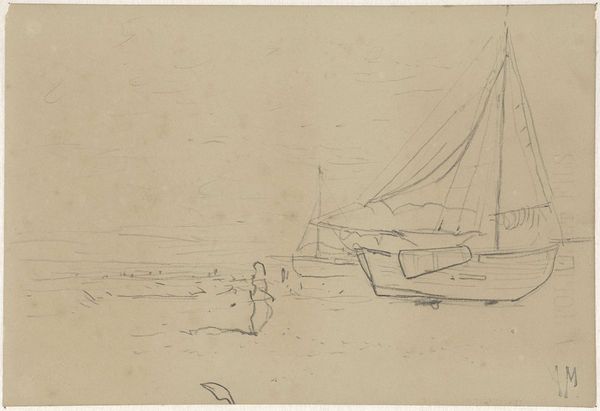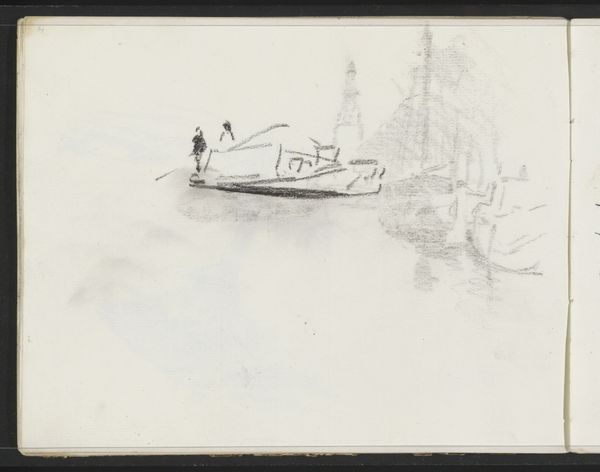
Dimensions: Sheet: 11 7/8 in. × 16 in. (30.2 × 40.6 cm) Plate: 9 13/16 × 13 3/4 in. (25 × 35 cm)
Copyright: Public Domain
Curator: At first glance, this etching appears delicate, almost ethereal. A serene image isn’t it? Editor: Indeed. The print’s muted tones and subtle gradations in value definitely evoke a certain tranquility. The etching before us, titled "Bachots au bords de la Seine", was completed in 1858 by Félix Bracquemond. Etchings such as this demonstrate Bracquemond’s pivotal role in the revival of etching as a fine art medium. What aspects of Bracquemond’s method do you consider significant here? Curator: It's remarkable how he manipulated the etching process itself. Notice the varying line weights and densities, especially when rendered through the chemical process on the plate, creating a real sense of depth, almost like looking through a haze. It pulls the eye, but doesn't shout about it, right? And I believe these were more broadly circulating as impressions within an emerging, expanded market for prints during this time, meaning they become quite accessible objects. Editor: That’s interesting when you situate this in its historical moment. We see the rising popularity of printmaking, driven partly by industrialization and changing art markets. It also represents this growing public interest in scenes of everyday life, that quiet moment along the Seine. And I think, beyond aesthetics, there is Bracquemond's active participation in various artistic circles during a transformative time in the arts in France. He bridged the gap between the old Salon system and emerging avant-garde movements, as evidenced by his ties to Realism and Impressionism. Curator: The subject matter itself also supports that—common, accessible. The materiality is itself pretty basic. Looking at how Bracquemond leverages mass production techniques, he creates art for the many and that says something powerful about who should and could consume art. Not necessarily paintings accessible only by elites. Editor: Absolutely. We cannot overlook how it contributes to a democratized view of art. Printmaking allowed artists to distribute their work more widely, engaging new audiences and potentially challenging established hierarchies. In that sense, “Bachots au bords de la Seine" isn’t just a pretty picture, is it? It signifies a shift in how art was produced, distributed, and perceived within the evolving social fabric. Curator: Well, yes, the art historical lens casts interesting light on seemingly basic art objects and techniques, no doubt about it! I walk away from it all thinking that it is, after all, quite simply beautiful in its simplicity, no matter how broadly consumed.
Comments
No comments
Be the first to comment and join the conversation on the ultimate creative platform.
